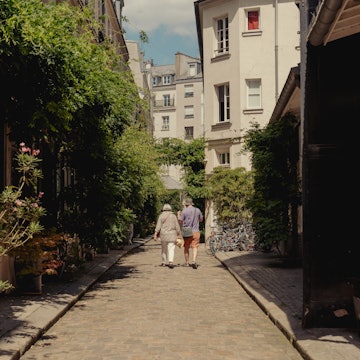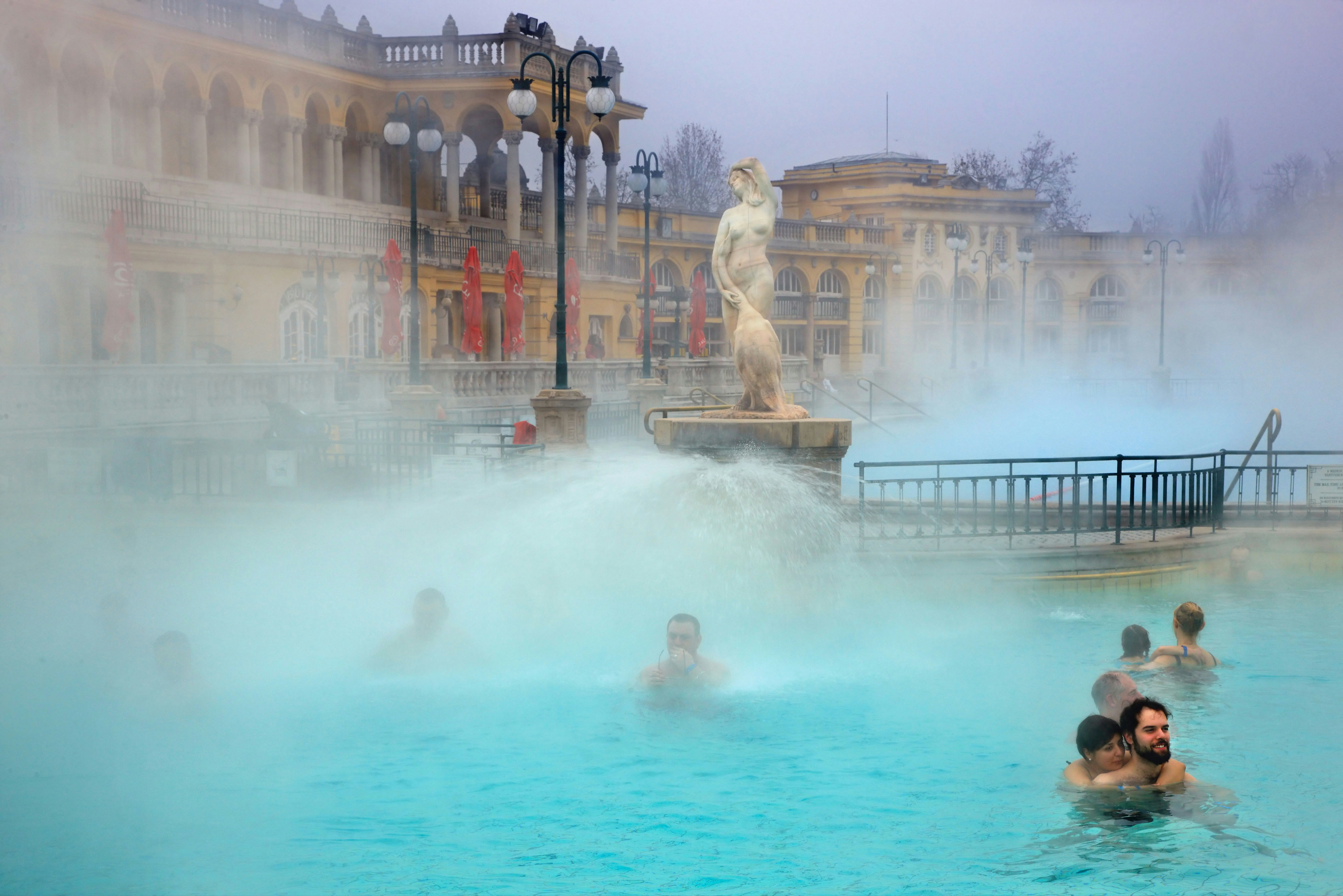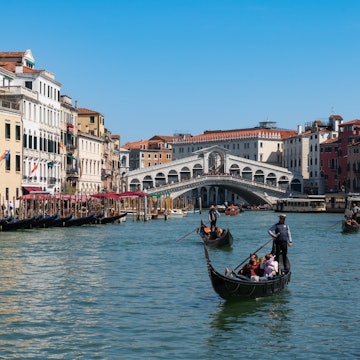

The Danube Bend from the Citadel at Visegrád. kardosildistock/Shutterstock
Hidden in plain sight in the heart of Europe, Hungary packs a big punch. Its mighty capital, Budapest, elegantly straddles the Danube River and duly deserves its reputation as one of the continent’s most beautiful capitals, pairing stunning architecture with world-famous thermal spas and vibrant nightlife.
Beyond the capital, you’ll find central Europe’s largest lake, Balaton, the favorite summer destination of locals; vineyards with grape varieties you may not have heard of but will end up gushing about; and a tranquil countryside that is perfect for a rural escape.
Hungary offers great value for money and quirky experiences you’ll never forget: taking a shot of fiery pálinka (fruit brandy) at a raucous ruin bar, soaking in the healing waters of a century-old thermal spa under open skies or riding on the Children’s Railway, a forest train operated almost entirely by kids.
Before your first visit to this captivating country, read our tips about when to go, how to get to the top destinations in Hungary and general costs.

When should I go to Hungary?
Hungary is a year-round destination, but the best time to visit depends on what you’d like to get out of your trip.
Summer (June through August) is peak tourist season, and temperatures hit 35°C (95°F). While there's plenty to do in the warmer months, including festivals and events pretty much all around the country, it is way too hot for sightseeing in Budapest in July and August. This is when to head to Lake Balaton and see what the fuss is all about at the “Hungarian sea.”
The second busiest time is around the winter holidays in December, when the temperatures drop below freezing, but fairy lights, cinnamon-scented markets, ice-skating rinks and an overall winter wonderland atmosphere make up for it. Hungary is especially bare in January and February, as the country doesn’t have many evergreens, and the sun sets at 4pm. You can get the best deals on accommodations then, though some attractions and museums close or have limited opening hours.
Hungary’s shoulder seasons of spring and autumn welcome travelers with pleasant weather, reasonable prices and smaller crowds at museums and historic sites. From March to June, Hungary is in full bloom, and wildflowers cover the hillsides. Summer continues into September, which means the weather is still balmy, but prices start to drop. October and November see the country prepare for a dormant period. The landscapes explode in autumnal colors of red, brown and yellow, and it is the time to tour wine cellars just after the harvest and the country’s caves and national parks.

How much time should I spend in Hungary?
Budapest requires at least a long weekend, but there is so much to do that even five days can fly by and leave you wanting more. If you have five days, add on a day trip to the Danube Bend and one or more of its charming towns, like Szentendre, Visegrád or Esztergom. A week is enough to put Lake Balaton on the itinerary, while if you have longer, you can venture further into Hungary, to Eger and Tokaj’s wineries, the Great Plain’s pastoral beauty or Pécs’ art scene.
Is it easy to get in and around Hungary?
For most travelers to Hungary, Budapest is the point of entry. Ferenc Liszt International Airport is well connected to the center by buses, and the main international train station in Budapest is Keleti. Hungary has no domestic flights; it’s small enough to get around by train or bus. Public transportation is reliable, and the roads are in good condition. You won’t need a car, unless you’re visiting some rural areas.
MÁV (Magyar Államvasutak, meaning "Hungarian State Railways") operates reliable service to major towns in Hungary. Budapest has three main stations: Keleti serves northern and part of northeastern Hungary, trains from Nyugati reach the Great Plain and the Danube Bend, and Déli serves Transdanubia and Lake Balaton. Volánbusz runs an extensive bus network. Buses can sometimes be quicker than trains for long distances and can also take you to some places that trains can’t.
Mahart Passnave runs excursion boats and hydrofoils on the Danube River from Budapest to destinations like Szentendre, Visegrád and Esztergom from spring to autumn (usually April to September). Balaton Shipping Company's passenger ferries serve about 20 ports on Lake Balaton, while Hungary also extends endless opportunities for cyclists.

Top things to do in Hungary
Explore Budapest’s two stunning sides
No trip to Hungary would be complete without setting foot in its entrancing capital. The Danube River runs through Budapest, dividing it into two different yet equally splendid sides. Buda is calm and serene, with green hills, panoramic views and historic sites like the Matthias Church, Gellért baths, Children’s Railway and Fishermen’s Bastion. Pest is lively, busy and buzzing, boasting just as impressive landmarks, such as the Parliament, St Stephen’s Basilica and City Park, alongside ruin pubs, historic coffee houses and cool rooftop bars. Margaret Island in between tenders some tranquil relaxation, while Óbuda safeguards its village-like atmosphere and the Roman ruins of Aquincum. Budapest is extremely walkable, so if you can, get lost around its lovely streets, don’t forget to look up at the gorgeous buildings and wear comfortable shoes for Buda’s cobblestone streets.
Cruise the Danube River
In Budapest, both sides of the river are dotted with attractions, so hop on a sightseeing boat to get a front-row seat to landmarks like the Royal Palace and the city’s amazing bridges. Seeing them illuminated at night is especially memorable. Mahart Passnave's various options for a cruise are a good choice if you’d also like to visit Danube Bend destinations like Szentendre, known for its galleries, museums and churches; Esztergom, home to Hungary’s largest church; and historic Visegrád, topped by one of the most prominent and photographed spots in the Danube Bend, the Citadel. If you’d enjoy a more hair-raising ride, buckle up at RedJet in Budapest – this 12-seat speedboat zooms by the city’s sights at 80km/h (49mph), performing extreme stunts on the way.
Have a splash at Lake Balaton
Hungarians just love Lake Balaton. At least one weekend a year spent splashing around its shallow waters, swimming, playing, paddleboarding, sailing and eating lángos – Hungary's favorite street food, a disk-shaped dough that is deep-fried then topped with sour cream and shredded cheese – is a must for most Hungarians in the summer. The lake's shoreline is crowded with marinas, tiny villages and lovely vineyards: the southern side has the shallow water, while the northern has the best wineries and hikes. The oldest resort on the lake is Balatonfüred; Tihany hosts the fragrant Tihany Lavender Festival in early July, while Siófok is where the party is for a mostly younger crowd. In spring and autumn, Lake Balaton is quiet and empty, while in winter, if the lake freezes over, it turns into a giant ice-skating rink. A word of advice: in the presence of a local, nothing bad should ever be said about Lake Balaton.
Indulge in local wines
A century ago, Hungary was one of Europe’s most important wine-making regions, but pests, wars and Soviet-era mass production resulted in troubled times for the country's vineyards. Thankfully, Hungarian wines are receiving newfound recognition, and its 22 wine regions are a superb place to become acquainted with their high-quality, well-priced vintages. Tokaj-Hegyalja is the top wine tourism destination for its honey-sweet Tokaji aszú white, but nowadays it produces great dry and sparkling wines as well. Eger is a jewel box of a town, with baroque buildings and excellent savory wines, both red and white, most notably the celebrated red Egri Bikavér (Bull’s Blood). Sopron is the capital of ruby red wines made of kékfrankos grapes. Northern Balaton is a panoramic region, with sweeping vistas of the lake and rolling vineyards planted mostly with white grapes; while down south, the warmer regions of Villány and Szekszárd produce rich reds.

My favorite thing to do in Hungary
Be it scorching sun or below freezing temperatures, I love donning a swimsuit and having a splash. Though Hungary is landlocked, with no dramatic coastline, locals have an undeniable love for water. Visiting Lake Balaton in summer is an absolute must, but offseason, Hungary has thermal baths galore. Taking the waters is a way of life – more than 1000 thermal springs bubble up from below ground throughout Hungary. These sources are rich in dissolved minerals; the exact content varies depending on the location, so they aren’t only fabulously calming but also curative. Locals swear by the healing properties of mineral-rich, muscle-melting warm waters.
Budapest, nicknamed the World’s Spa Capital, is the best place for trying a thermal spa, with jaw-dropping superstars like the Széchenyi, Rudas and Gellért baths as well as lesser-known havens like Veli Bej and Lukács. Elsewhere in the country, the thermal spas are generally more focused on families, but you can still find utterly unique places to immerse yourself in Hungary’s bathing culture. The Miskolctapolca Cave Bath is set in a natural cave with thermal water flowing through it (currently closed pending renovations after a fire in September 2024), and not too far from Lake Balaton, Hévíz has the world’s largest swimmable natural thermal lake, where the temperature averages 33°C (91.4 °F) and never drops below 23°C (74.4°F), so in winter, you can even bathe when there’s ice on the surrounding fir trees.

How much money do I need for Hungary?
While incredibly high inflation has pushed prices up in recent years, Hungary, and notably Budapest, offers excellent value for travelers, making it a popular destination for those looking to experience Europe on a budget. The country is generally affordable compared to western Europe. Food, transportation and accommodations are all reasonably priced, especially in the countryside.
Credit cards are accepted all around the country – though not always American Express – but it’s wise to carry some cash in Hungarian forints, particularly in the countryside, but smaller shops, bars and ice cream parlors in Budapest will appreciate it too.
Public transportation ticket in Budapest: 450ft (US$1.20)
A pass valid for public transportation all around the county: 18,900ft (US$51)
Night at a three-star hotel in central Budapest: from 25,000ft (US$68)
Ticket to the Széchenyi baths: from 8800ft (US$24)
Lángos: from 2000ft (US$5.5)
A glass of wine: from 1500ft (US$4)
Dinner for two at a midrange restaurant: from 1500ft (US$40)
Is Hungary safe?
Hungary is generally a safe destination for travelers. Violent crime is rare, and the country consistently ranks as one of the safer places to visit in central and eastern Europe. Budapest, in particular, is well patrolled, tourist-friendly and busy even late into the night, especially in districts like the Jewish Quarter. Solo female travelers should not experience any serious issues.
That being said, petty crime like pickpocketing can occur in Budapest, just like in any major city, in crowded areas, on public transportation or at tourist hot spots. It’s wise to keep an eye on your belongings, avoid unlicensed taxis and be cautious with nightlife scams (like overly friendly strangers who invite you to overpriced bars or taxis waiting outside those bars to take you home).
Do people speak English?
Yes, for the most part among the younger generations, but the further away you drift from the capital, the more “nem értem” ("I don’t understand") you’ll hear. Hungarian is an incredibly hard language. If you have some background in European languages, you’ll be surprised at just how different it is from anything else you've ever heard. Learning just a few Hungarian words like köszönöm (thank you, pronounced "keu-seu-neum"), kérem (please, pronounced "kay-rem"), jó napot (the polite form of hello, pronounced "yoh-nah-pot"), igen (yes, pronounced "ih-ghen") and nem (no, pronounced "nehm") can go a long way.
Friendly faces?
Though Hungarians notoriously don’t smile as much as people in other European nations, and service at supermarkets, ticket offices and museums can be perceived as rude, this is nothing personal and does not reflect the people in general. On an individual level, Hungarians are warm, welcoming and witty, with a good sense of humor, so it’s highly recommended to get to know them better.














